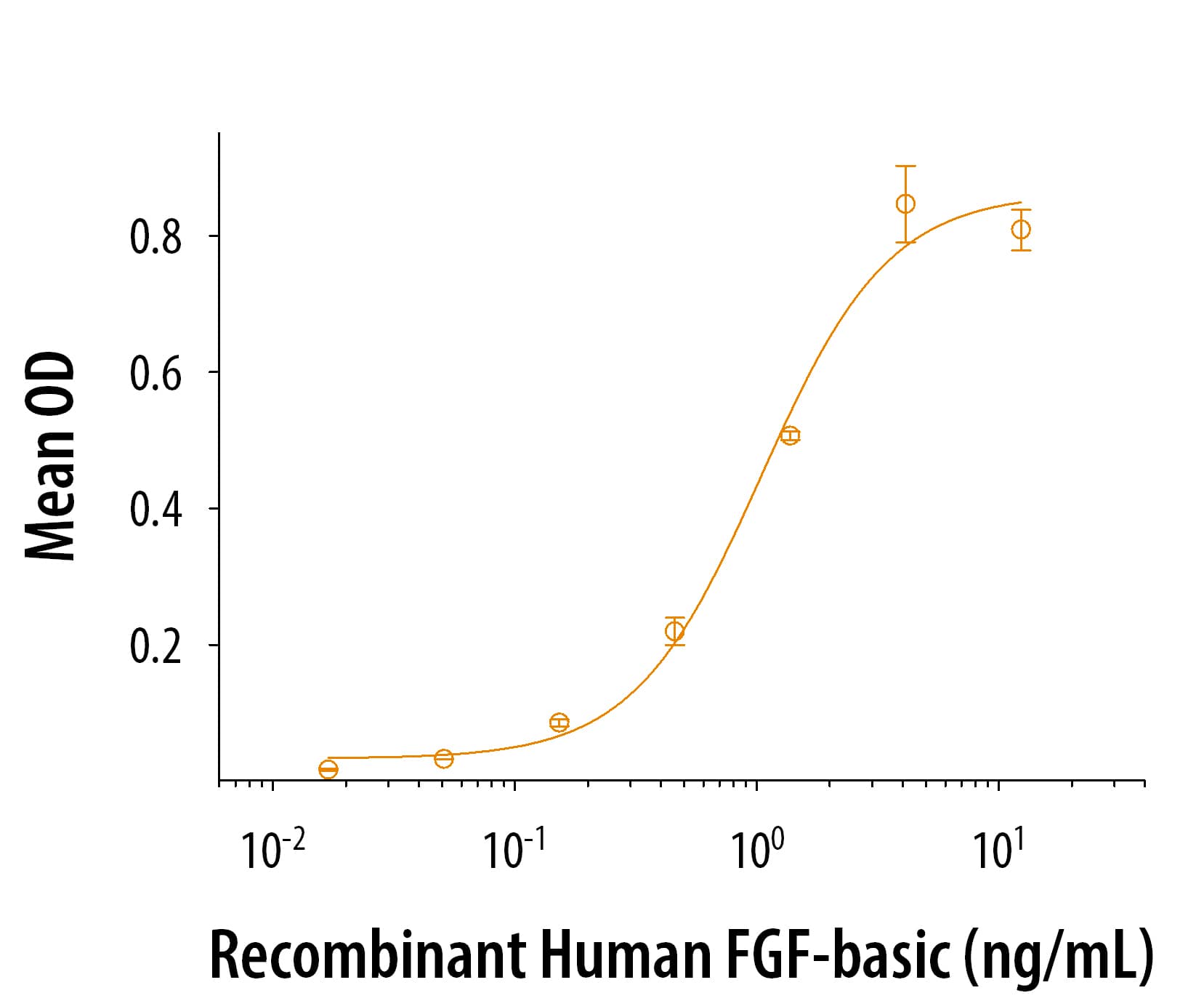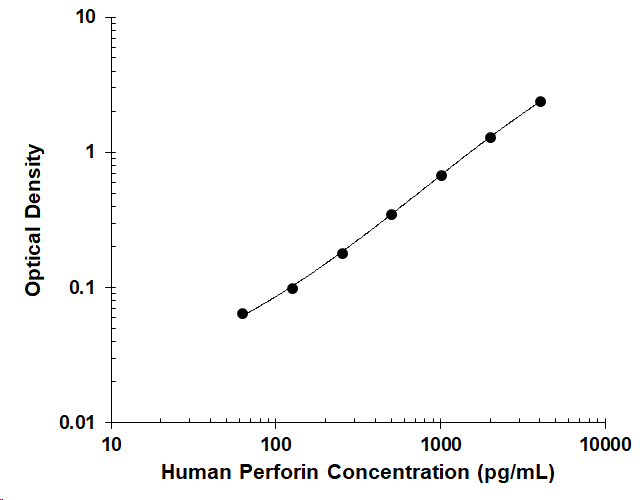Recombinant Human Glypican 5 Protein Summary
Product Specifications
Glu25-Thr554, with a C-terminal 6-His tag
Analysis
Customers also Viewed
Product Datasheets
Carrier Free
CF stands for Carrier Free (CF). We typically add Bovine Serum Albumin (BSA) as a carrier protein to our recombinant proteins. Adding a carrier protein enhances protein stability, increases shelf-life, and allows the recombinant protein to be stored at a more dilute concentration. The carrier free version does not contain BSA.
In general, we advise purchasing the recombinant protein with BSA for use in cell or tissue culture, or as an ELISA standard. In contrast, the carrier free protein is recommended for applications, in which the presence of BSA could interfere.
2607-G5
| Formulation | Lyophilized from a 0.2 μm filtered solution in PBS with BSA as a carrier protein. |
| Reconstitution | Reconstitute at 10 μg/mL in sterile PBS containing at least 0.1% human or bovine serum albumin. |
| Shipping | The product is shipped at ambient temperature. Upon receipt, store it immediately at the temperature recommended below. |
| Stability & Storage: | Use a manual defrost freezer and avoid repeated freeze-thaw cycles.
|
2607-G5/CF
| Formulation | Lyophilized from a 0.2 μm filtered solution in PBS. |
| Reconstitution | Reconstitute at 100 μg/mL in sterile PBS. |
| Shipping | The product is shipped at ambient temperature. Upon receipt, store it immediately at the temperature recommended below. |
| Stability & Storage: | Use a manual defrost freezer and avoid repeated freeze-thaw cycles.
|
Background: Glypican 5
The Glypicans (glypiated proteoglycans) are a small multigene family of GPI-linked proteoglycans that likely play a key role in embryonic morphogenesis (1 - 4). There are currently six known mammalian Glypicans. They all share a common-sized protein core of 60 - 70 kDa, an N-terminus which likely forms a compact globular domain, 14 conserved cysteines that form multiple intrachain disulfide bonds, and a number of C-terminal N- and O-linked carbohydrate attachment sites. Based on exon organization and the location of O-linked glycosylation sites, at least two subfamilies of glypicans are known, with one subfamily containing Glypicans-1, 2, 4 and 6, and another subfamily containing Glypicans-3 and 5 (3, 5). Human Glypican-5 (GPC-5) is synthesized as a 572 amino acid (aa) preproprecursor that contains a 24 aa signal sequence, a 532 aa mature region and a 16 aa C-terminal prosegment (6, 7). There are three potential N-linked, and five potential O-linked sites for glycosylation or glycanation. GPC-5 is believed to contain 6 - 7 kDa of glycosylation and at least 55 kDa of proteoglycan. This is based on an assumption of the presence of one heparan sulfate chain of 36 kDa and one chrondroitin sulfate chain of 17 kDa (7, 8). When added to the core molecular weight of 59 kDa, the mature protein is approximately 120 kDa in size. To date, however, the actual size of native human GPC-5 has not been reported and the suggestion of a chrondroitin sulfate modification is based on the expression of human GPC-5 in COS-7 cells (7). Human to mouse, there is 88% aa identity over the mature region. Cells known to express GPC-5 are principally embryonic in nature, and include neurons and mesenchyme (1, 7). The function of GPC-5 is essentially unknown. As a glypican family member, it may facilitate heparin-binding growth factor signaling and polyamine uptake into expressing cells (9, 10).
- Song, H.H. and J. Filmus (2002) Biochim. Biophys. Acta 1573:241.
- Filmus, J. (2001) Glycobiology 11:19R.
- De Cat, B. and G. David (2001) Semin. Cell Dev. Biol. 12:117.
- Filmus, J. and S.B. Selleck (2001) J. Clin. Invest.108:497.
- Veugelers, M. et al. (1999) J. Biol. Chem. 274:26968.
- Veugelers, M. et al. (1997) Genomics 40:24.
- Saunders, S. et al. (1997) Dev. Biol. 19:78.
- Rapraeger, A. et al. (1985) J. Biol. Chem. 260:11046.
- Fransson, L-A. et al. (2004) Cell Mol. Life Sci. 61:1016.
- Fransson, L-A. (2003) Int. J. Biochem. Cell Biol. 35:125.
Citations for Recombinant Human Glypican 5 Protein
R&D Systems personnel manually curate a database that contains references using R&D Systems products. The data collected includes not only links to publications in PubMed, but also provides information about sample types, species, and experimental conditions.
2
Citations: Showing 1 - 2
Filter your results:
Filter by:
-
The IgG4 hinge with CD28 transmembrane domain improves VHH-based CAR T cells targeting a membrane-distal epitope of GPC1 in pancreatic cancer
Authors: N Li, A Quan, D Li, J Pan, H Ren, G Hoeltzel, N de Val, D Ashworth, W Ni, J Zhou, S Mackay, SM Hewitt, R Cachau, M Ho
Nature Communications, 2023-04-08;14(1):1986.
Species: Human
Sample Types: Cell Culture Supernates
Applications: ELISA Capture -
Epitope mapping by a Wnt-blocking antibody: evidence of the Wnt binding domain in heparan sulfate
Sci Rep, 2016-05-17;6(0):26245.
Species: Human
Sample Types: Cell Culture Supernates
Applications: ELISA (Standard)
FAQs
No product specific FAQs exist for this product, however you may
View all Proteins and Enzyme FAQsReviews for Recombinant Human Glypican 5 Protein
There are currently no reviews for this product. Be the first to review Recombinant Human Glypican 5 Protein and earn rewards!
Have you used Recombinant Human Glypican 5 Protein?
Submit a review and receive an Amazon gift card.
$25/€18/£15/$25CAN/¥75 Yuan/¥2500 Yen for a review with an image
$10/€7/£6/$10 CAD/¥70 Yuan/¥1110 Yen for a review without an image















